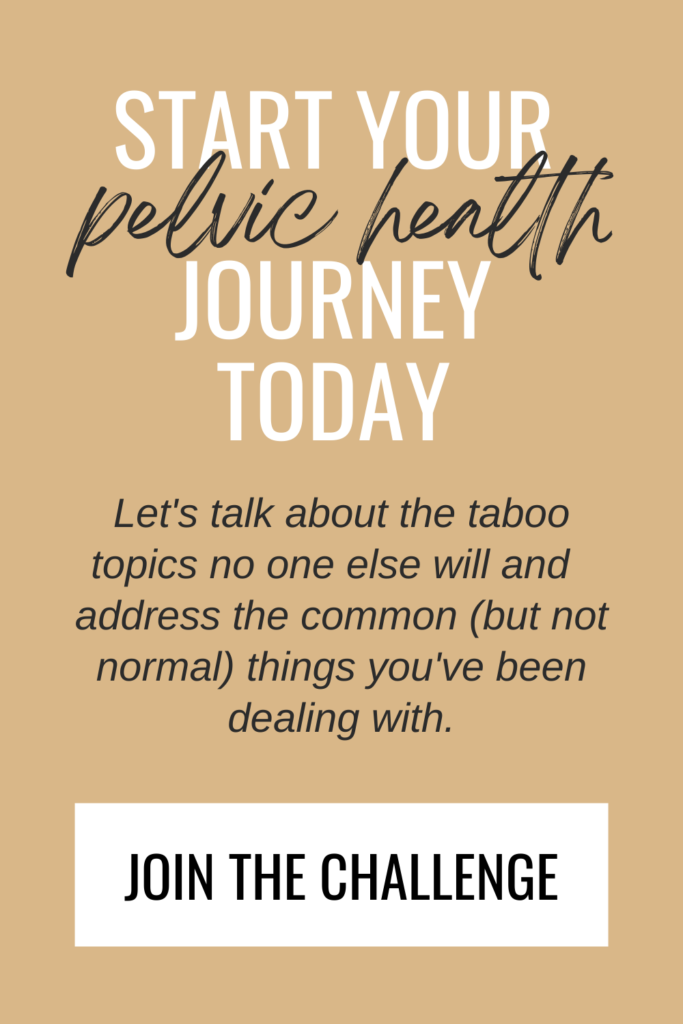If I had a dollar for every time someone asked my take on vaginal lubricant, I’d be a wealthy, wealthy woman. And if you’re looking for my two cents on the topic, you better be prepared for a soapbox spiel because I’m ~picky~ when it comes to what I put in, on, and around my body, especially in an area as porous (and important) as the vagina.
We’re starting to get better about choosing the all-natural versions of the foods we eat, skincare products we use, and household cleaners we trust, but sometimes the “little things” (like lube) are a quick purchase based on convenience rather than health. Even if a product’s used once to twice a week…ooooooor month (lol, let’s be honest)…the toxin load that can build in the body over time is worth making the extra effort to pause and really do your research before buying.
So what do I want in a vaginal lubricant?
I want chemical-free, long-lasting, no-staining, amazing texture, aaaaaaaand a reasonable price point. Yes friend, only the best when it comes to my health “down there”…and I have a feeling you’re the same.
So let’s break it down— the do’s and don’ts, positives and negatives, must knows and don’t cares of vaginal lubricant while keeping your sex life [and] vaginal health in mind. Am I a subject matter expert? Haha…no. But my profession as a pelvic rehab therapist involves talking to patients about intercourse on the regular, and I end up with lube on my pants, shoes, or office floor at least once a week, sooooo…*shrug*.
Just like most things around here on the Make + Manifest blog, I’m approaching this subject from both a personal and professional standpoint; that ~perfect~ mix of clinical knowledge and real-life experience that makes me the bestie you text with all your vagina questions, so you can be confident I won’t steer you wrong.
THE BEST-
If I could give a gold star to one type of lubricant, it would be anything that’s water-based. Lubes with H2O as their primary ingredient tend to be more natural, better for your skin, easiest to clean, and safe when used with any type of condom or sex toy. In the words of Michael Scott…a win, win, win. But because nothing’s perfect, water-based lubricant is more easily absorbed into the skin, making the likelihood of needing to re-apply realllllllly its only flaw.
When choosing a water-based lubricant there are a few things you want to look for—
1. Osmolality. This is the number of particles that can be absorbed into vaginal tissue, and the osmolality of natural vaginal secretions is around 300 mOsm/kg. Try to find a lubricant with an osmolality of less than or equal to this.
2. pH. Normal vaginal pH is anywhere from 4.0 – 4.5 (so a bit more acidic) and your lubricant should reflect this as well. Anything above or below this can disrupt your natural vaginal bacteria and lead to an unpleasant smell, abnormal discharge, and even infection.
3. Ingredients. Glycerin is a common addition to water-based lube in an attempt to help make it slipperier and last longer. However, the cost isn’t worth the benefit as this additive is commonly associated with an increased risk of yeast infection and should be avoided when possible.
My top finds that meet all of the above requirements include Slippery Stuff, Good Clean Love, and Sliquid. Obviously there’s more out there, but be sure to do a little detective work and read the packaging before clicking “purchase”.
THE GOOD-
Silicone-based lube is a close second with the added positives of longer-lasting lubrication (try saying that three times fast) and its effectiveness in “wet” environments like the bath or shower, both because silicone doesn’t as readily absorb into the skin. You also don’t have to worry about a silicone lube’s osmolality or pH, but you should still be mindful of the ingredients list and you’ll find my [MUST AVOID’S] by scrolling just a bit further.
The downsides of silicone lube is that it (1) tends to be a bit more expensive and (2) you need to be careful when using it with silicone sex toys or condoms as it can break down the rubber. As long as you’re willing to pay a little more and can remember the “no silicone on silicone” rule, you’re overall good to go with this option.
If silicone-based is the route you want to take, then look no further! I’ve checked out the selection and my toxin-free favorites are Sliquid, Uberlube and Naked Silk.
THE MEHHHHHH-
Using oil-based lubes and common kitchen oils to decrease friction in the bedroom is a cheap, resourceful, and overall natural option. I mean, what’s more convenient than running to the kitchen in the heat of the moment? Or…maybe you’re already there? *wink wink* And while your coconut oil, olive oil, and aloe-based lubricants will get the job done, there are a few things you want to keep in mind—
1. Oil and latex condoms do not mix. It will break down latex condoms. If condoms aren’t in your game plan, then this is no big deal, but If you’re using them for any sort of protection, this is not the option for you.
2. Many common kitchen oils contain pesticides and other hidden processing ingredients that you don’t want soaking into your vagina. If you’re adamant on sticking to plant-based options, make sure your oils are organic and cold-pressed when possible (a good rule to follow for general consumption too).
3. Oils are more commonly associated with yeast infections as they can upset your natural vaginal pH. This isn’t a reason to poo-poo the idea altogether, but if you’re more susceptible to them or find yourself getting an infection after use, this may not be the best alternative for you.
For oil-based options with multi-purpose functions, check out these coconut oil, olive oil, and almond oil picks. Aloe vera is also becoming more popular in the lube world, and Aloe Cadabra is my top choice.
THE BAD-
There isn’t necessarily one bad “type” of lubricant, but there are ingredients commonly found in lube that shouldn’t go anywhere near your body, let alone in it. Some of the more well-known and easily accessible brands contain one or more items from this must-avoid list, and the promise of flavor, fragrance, or a warming sensation isn’t all it’s cracked up to be when it comes to your vaginal health.
Always, always turn the container over to read the ingredients (this rule applies to just about everything, btw). And when you do, look out for the following…
- Glycerin is a sugar alcohol that’s commonly associated with an increased risk of yeast infections. Especially look for this one in the water-based lubricants.
- Flavor, fragrance, and warming sensation are a fun (and sneaky) way of warning you about added (and likely unnatural) chemicals that can negatively effect vaginal tissue.
- Petrolatum (petroleum jelly) and microbicide nonoyynol-9 can disrupt your natural vaginal pH and interfere with the good bacteria produced by your vagina.
- Parabens are often added to personal care products as a way to enhance their shelf life, but these can also upset natural vaginal bacteria.
- Propylene glycol, benzene, benzonic acid, chlorhexidine, and benzocaine can cause an allergic reaction in the vulvar tissue.
AND THAT’S A WRAP!
Lubricant can be a great addition to your sex life as long as you’re choosing the type that checks all your boxes [a-n-d] are mindful of the ingredients you’re putting in your vagina.
And while I’m 100% here for a little extra slide and glide, it’s my civil duty as a pelvic rehab therapist (not really, but it sounded cool) to ask you WHY you’re using lubricant. Because if you have pain with intercourse— vaginal dryness, irritated vulvar tissue, pelvic floor tightness, or a healing tear— this is not normal…I REPEAT: NOT NORMAL…and it’s imperative you address the ~actual~ issue that’s causing your pain, not just slather lube on it and cross your fingers hoping for the best. I wrote a blog post on how to heal pain with intercourse, which may even decrease your need for lube altogether! Check it out here.
As you’re getting to the bottom of your need for lube, or if you simply like a little extra wetness in the bedroom, the guidelines above are here to help you experiment and find a lubricant you love. This is also another opportunity to improve your pelvic health just by being informed and a touch more conscious as you make your purchasing decisions.
The all-natural revolution is here, friend…and it applies to your lube too.
– Amanda
Disclaimer: The content provided here does not constitute medical advice, nor is it a substitute for personalized healthcare. If you have concerns about a medical condition, diagnosis, or treatment, you should consult with a licensed healthcare professional.
Disclosure: Some of the links above are affiliate links, meaning, at no additional cost to you, I will earn a commission if you click through and make a purchase. No pressure, but I have a feeling you’re gonna like what I’ve taken the time to put my recommendation behind.



















